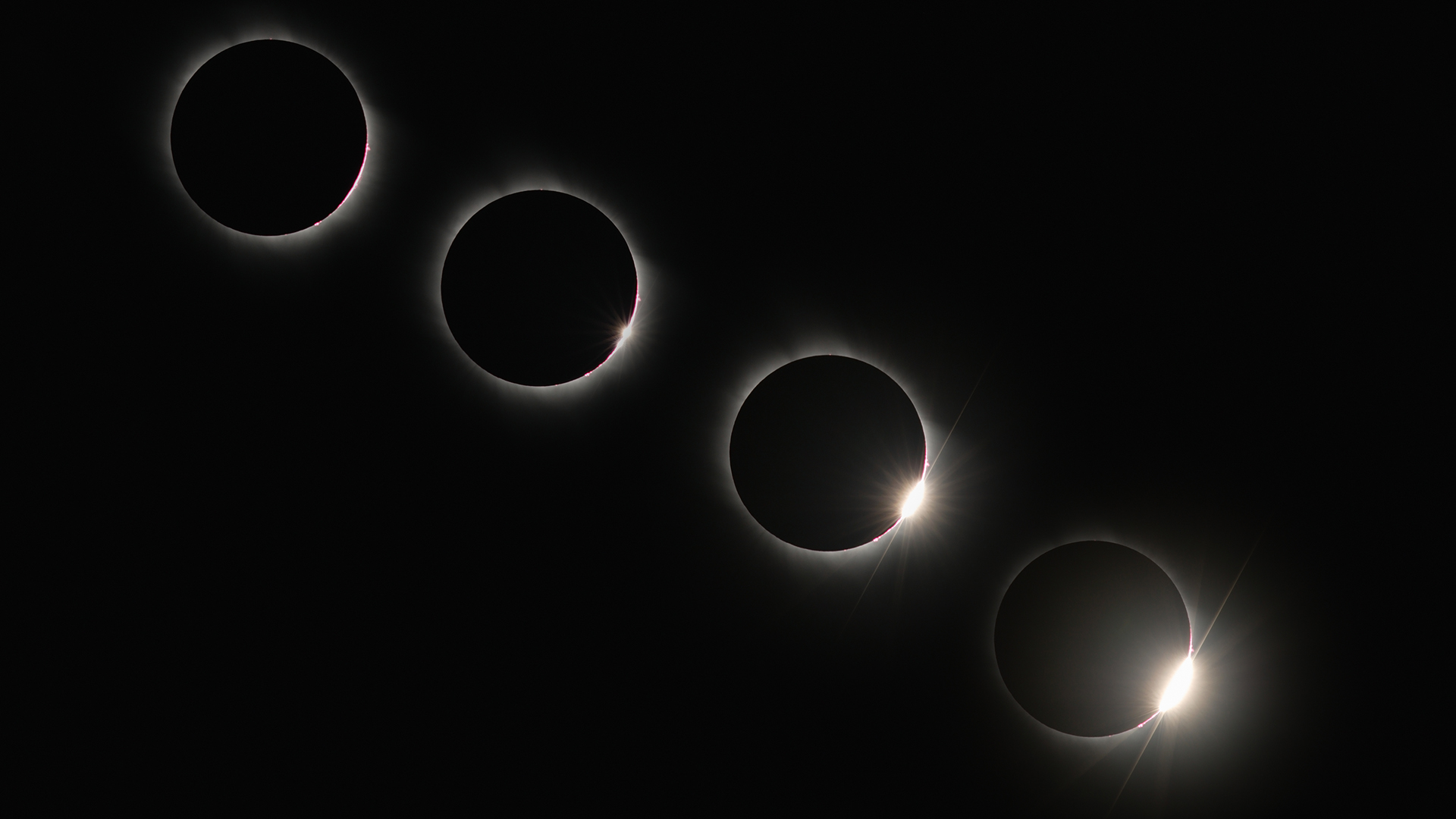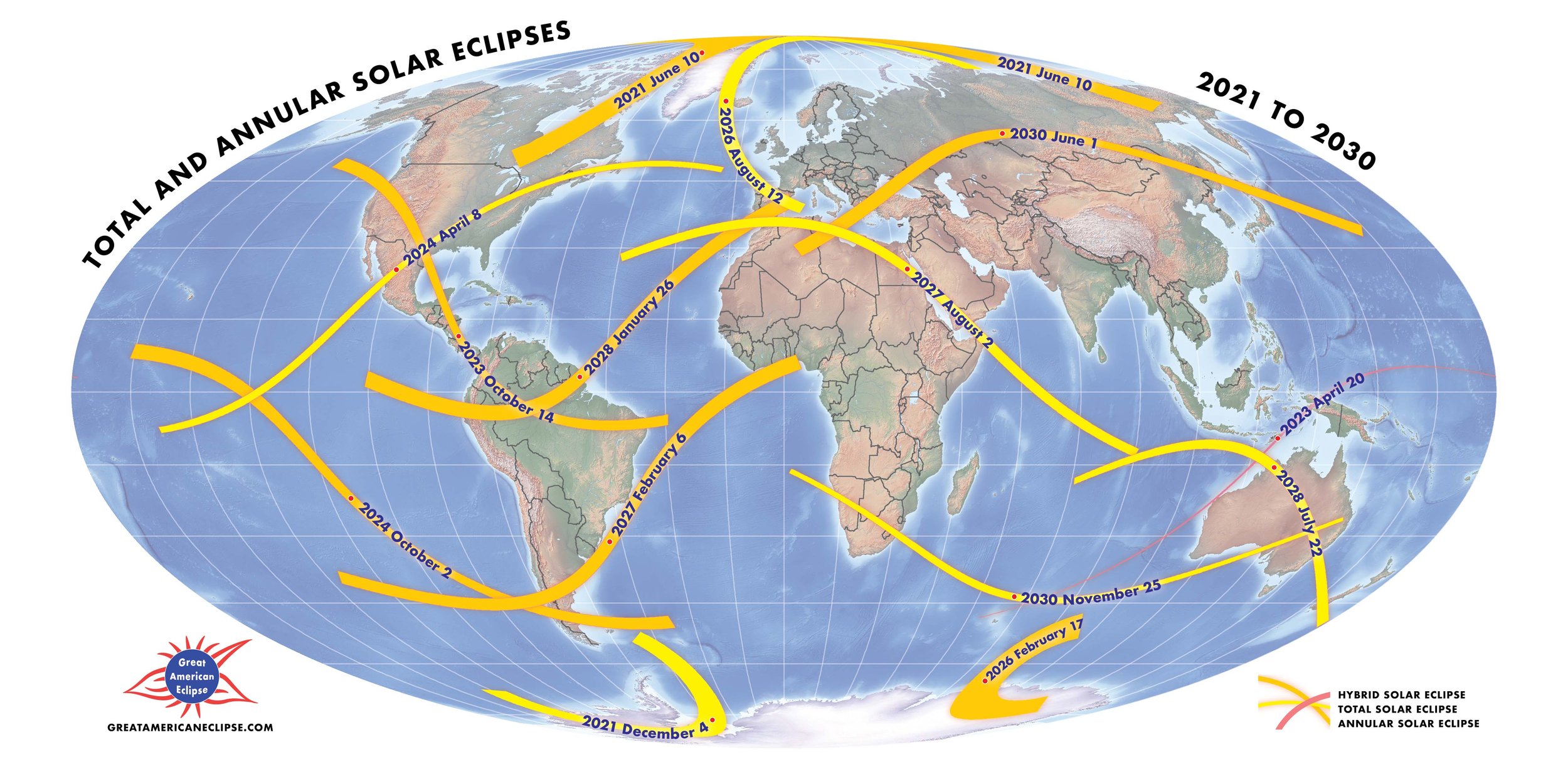How often do solar eclipses occur?
On April 8, a total solar eclipse will cross North America for the second time in less than seven years. That's not typical; here’s how often solar eclipses occur, and when the next total solar eclipse will be visible.

The total solar eclipse on April 8 in North America comes six years, seven months and 18 days after the last event crossed the continent in 2017. Although these eclipses' narrow paths of totality are very different, both their paths cross parts of Missouri, Illinois and Kentucky.
So how often do total solar eclipses occur? Turns out, while these two events are close together, it is rare to experience totality in the same place twice in such a short time. According to a paper published in 1982 by Belgian astronomer Jean Meeus, a total solar eclipse occurs in the same place on the planet once every 375 years, on average. NASA's Ernie Wright recently refined that figure to 366 years after mapping the 11,898 paths of every total solar eclipse across a 5,000-year period from 2,000 B.C. to A.D. 3,000.
However, total solar eclipses are not rare on a planet-wide scale. A solar eclipse of some kind occurs on Earth between two and five times each year, though most years have two eclipses, according to Timeanddate. On average, a total solar eclipse happens every 18 months, but there's often just less than a year between them. For example, the last total solar eclipse was on April 20, 2023, and the next is on April 8, 2024. That gap is the same as a lunar year — 12 orbits of Earth by the moon (a lunation) — and is the shortest time possible between two total solar eclipses, with one exception.
According to EclipseWise, the time interval between two successive solar eclipses can be either one, five or six lunations, but they are usually different types of event.

April 8 total solar eclipse: The best places to stargaze near the path of totality
For example, a total eclipse — when the moon completely blocks the sun — could be followed by an annular eclipse — when the moon passes between the sun and Earth while it is at its farthest point from our planet, meaning it doesn't completely obscure the sun — or a partial eclipse, in which the moon covers a portion of the sun. However, it is possible that a total eclipse can be followed six lunations later by what's called a total-annular (or hybrid) solar eclipse, which does include a short totality, Luca Quaglia, an eclipse expert, told Live Science in an email. If the paths of a hybrid and a total eclipse cross, some locations could experience totality twice in six months.
What's most important for skywatchers, however, is when the next total solar eclipse is. Here's what's coming up in the decade following April 8, according to eclipse cartographer Xavier Jubier:
Sign up for the Live Science daily newsletter now
Get the world’s most fascinating discoveries delivered straight to your inbox.
- Aug. 12, 2026: Greenland, Iceland and Spain
- Aug. 2, 2027: Southern Spain, North Africa and the Middle East
- July 22, 2028: Australia and New Zealand
- Nov. 25, 2030: Namibia, Botswana, South Africa, Lesotho and Australia
- Nov. 14, 2031: Pacific Ocean
- March 30, 2033: Russia and Alaska
- March 20, 2034: Central Africa and South Asia

Jamie Carter is a freelance journalist and regular Live Science contributor based in Cardiff, U.K. He is the author of A Stargazing Program For Beginners and lectures on astronomy and the natural world. Jamie regularly writes for Space.com, TechRadar.com, Forbes Science, BBC Wildlife magazine and Scientific American, and many others. He edits WhenIsTheNextEclipse.com.









